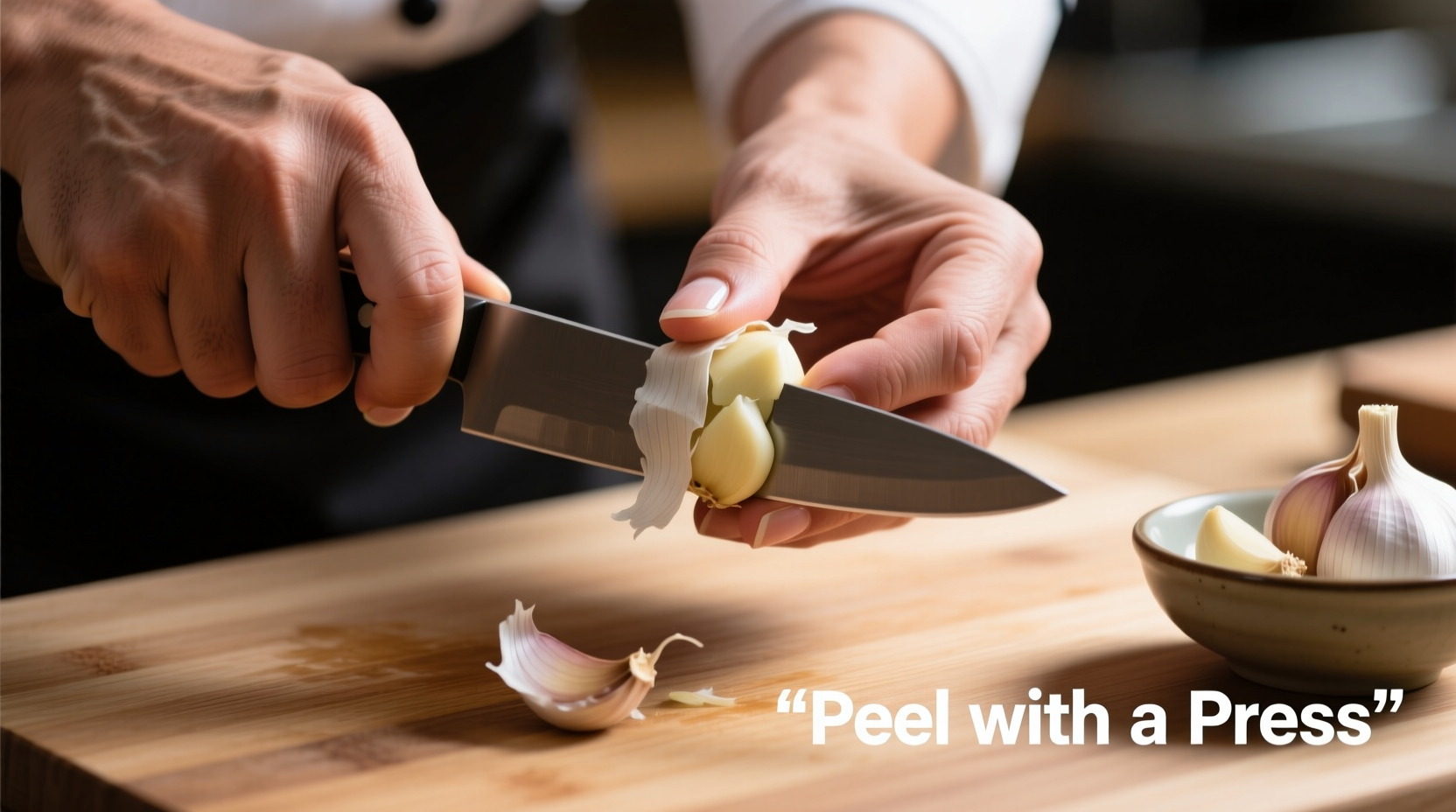The best way to prepare garlic involves three essential steps: peeling the cloves properly, chopping or crushing to your desired consistency, and allowing the cut garlic to rest for 10-15 minutes before cooking. This resting period activates allicin, garlic's key flavor compound, maximizing both taste and health benefits. Professional chefs use different preparation methods depending on the dish—mincing for even distribution, crushing for intense flavor, or roasting for sweetness.
Why Garlic Preparation Technique Matters
Garlic isn't just garlic—how you prepare it dramatically affects both flavor intensity and chemical composition. When garlic cells are damaged through cutting or crushing, the enzyme alliinase converts alliin into allicin, creating that characteristic pungent aroma and flavor. The method you choose determines how much allicin forms and how it interacts with your dish.
According to research published in the Journal of Agricultural and Food Chemistry, allowing crushed garlic to rest for 10 minutes before heating preserves up to 60% more allicin compared to immediate cooking. This simple step makes the difference between bland and brilliant garlic flavor in your cooking.
Essential Tools for Perfect Garlic Preparation
While you can prepare garlic with just a knife, having the right tools makes the process faster and more consistent. Here's what professional chefs recommend:
| Tool | Best For | Professional Tip |
|---|---|---|
| Wide chef's knife | Mincing, chopping | Use flat side to crush cloves before peeling |
| Garlic press | Quick extraction | Clean immediately to prevent clogging |
| Microplane grater | Raw applications | Produces intense, evenly distributed flavor |
| Wooden mortar & pestle | Pastes, aiolis | Preserves texture better than blenders |
Step-by-Step Garlic Preparation Methods
Peeling Garlic Efficiently
Forget struggling with individual cloves. Professional chefs use these three reliable methods:
- The Shake Method: Place unpeeled cloves in a sealed container (like a mason jar) and shake vigorously for 15-20 seconds. The friction separates skins from cloves.
- The Press Method: Place cloves on cutting board, lay flat side of chef's knife over them, and press down firmly with palm. The skin loosens for easy removal.
- The Microwave Method: Heat whole bulb for 10-15 seconds. The cloves separate easily from both outer skin and individual wrappers.

Mincing Garlic Like a Pro
For even flavor distribution in sauces and dressings:
- Peel cloves using one of the methods above
- Cut off root end and slice cloves lengthwise
- Make crosswise cuts to create small pieces
- Gather pieces and rock knife blade back and forth
- For finer mince, sprinkle with salt and scrape with knife edge
Food science research from the University of California shows that smaller garlic pieces create more surface area, releasing up to 30% more flavor compounds than larger chunks.
Crushing Garlic for Maximum Flavor
When you need intense garlic flavor that permeates your dish:
- Peel cloves
- Place flat side of chef's knife over clove
- Press down firmly with palm until clove flattens
- Chop crushed garlic slightly for easier incorporation
- Let sit 10 minutes before adding to dish
This method releases the most allicin, creating the strongest garlic flavor. According to culinary studies, crushed garlic provides up to 50% more flavor impact than sliced garlic in finished dishes.
Roasting Garlic for Sweet Complexity
Transform pungent garlic into sweet, spreadable goodness:
- Cut top ¼ inch off whole garlic bulb to expose cloves
- Drizzle with 1 tsp olive oil and sprinkle with salt
- Wrap bulb in foil with oil side up
- Bake at 400°F (200°C) for 35-40 minutes
- Squeeze softened cloves from skins when cool
Roasting converts garlic's sharp compounds into milder, sweeter flavors through the Maillard reaction. The USDA's Food Research Lab confirms that roasting reduces allicin content by approximately 70%, creating a more subtle garlic profile perfect for spreads and creamy sauces.
Storing Prepared Garlic Properly
How long your prepared garlic lasts depends on the method:
- Minced/crushed garlic: Store in airtight container in refrigerator for up to 3 days
- Whole peeled cloves: Keep in olive oil in refrigerator for up to 1 week
- Roasted garlic: Refrigerate in sealed container for up to 10 days
- Freezing option: Freeze minced garlic in ice cube trays with oil for 3-4 months
The National Center for Home Food Preservation warns against storing garlic in oil at room temperature due to botulism risk. Always refrigerate garlic-oil mixtures and use within one week.
Troubleshooting Common Garlic Problems
Bitter or Burnt Garlic
Giving your dish an unpleasant bitter taste? This happens when garlic exceeds its 325°F (163°C) smoke point. Solution: Cook garlic at medium-low heat and add it after other aromatics like onions. The Food Science Institute recommends adding garlic during the last 1-2 minutes of sautéing for optimal flavor without bitterness.
Uneven Flavor Distribution
If some bites are overwhelmingly garlicky while others have none, you're likely adding whole cloves instead of properly prepared garlic. For even distribution, mince or crush garlic thoroughly and let it rest before cooking.
Persistent Garlic Odor on Hands
Remove stubborn garlic smell by rubbing hands with stainless steel (like your sink) under running water, or use lemon juice. The sulfur compounds in garlic bind to the steel, neutralizing the odor.











 浙公网安备
33010002000092号
浙公网安备
33010002000092号 浙B2-20120091-4
浙B2-20120091-4